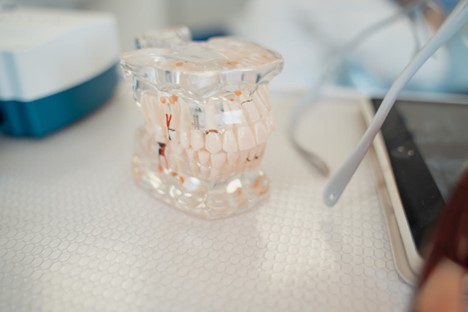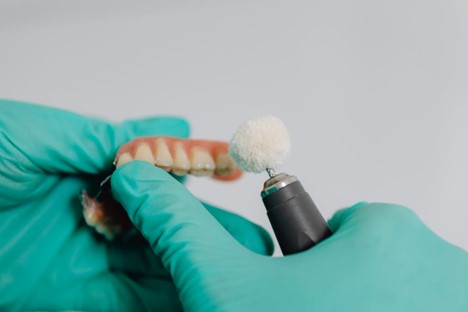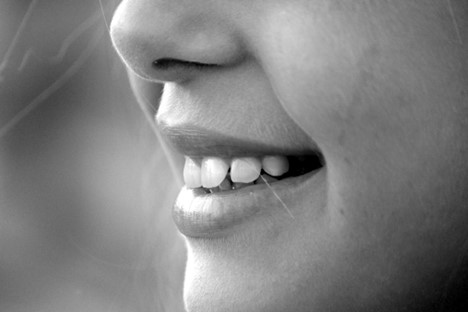Discover the Best Solution for Your Smile with the Latest Innovations
According to the Centers for Disease Control and Prevention (CDC), about 1 in 5 adults aged 65 or older have lost all their teeth, highlighting the prevalence of this issue. Fortunately, modern dentistry offers a variety of tooth replacement options tailored to meet diverse needs and preferences. Recent technological advancements, such as 3D printing and improved implant materials, have further enhanced the effectiveness and accessibility of these treatments.
Tooth loss can significantly impact your daily life and overall well-being. Beyond aesthetics, tooth loss can lead to serious oral health problems. The absence of teeth can cause the remaining teeth to shift, leading to misalignment and bite issues. Additionally, missing teeth can result in bone loss in the jaw, further complicating oral health.
Let’s explore the various tooth replacement options available today. Understanding these options allows you to make informed decisions that best suit your lifestyle and health needs.

Tooth Replacement Options Using 3D Printed Models
Understanding the Basics: What Are Your Tooth Replacement Options?
When it comes to replacing missing teeth, you have several effective options, each designed to address different needs.
1. Dental Implants: The Gold Standard
Dental implants are often considered the most advanced and durable solution. They consist of three main components:
- Implant Post: A titanium or zirconia screw surgically placed into the jawbone, mimicking a natural tooth root.
- Abutment: A connector piece that holds the crown.
- Crown: The visible part of the implant designed to match your natural teeth.
Implants integrate with your jawbone, offering unmatched stability and longevity. Studies have shown that dental implants have over a 96% success rate after 10 years, making them a reliable tooth replacement option.
Whether you need a single tooth replaced or a full arch, implants are a versatile option. They preserve bone density, provide a natural appearance, and eliminate the risk of slippage.
2. Dentures: The Traditional Choice
Dentures are removable appliances made to fit over your gums. They are ideal for replacing multiple missing teeth or even a full set.
- Complete Dentures: For full arch replacement.
- Partial Dentures: For filling gaps when some natural teeth remain.
Dentures are non-invasive and cost-effective, but they require regular adjustments and maintenance to ensure a proper fit. Advances like implant-supported dentures provide better stability and comfort compared to traditional designs.
3. Dental Bridges: Bridging the Gap
A dental bridge is a fixed solution that relies on adjacent teeth or implants for support. Types of bridges include:
- Traditional Bridges: Anchored to adjacent teeth.
- Cantilever Bridges: Supported on one side.
- Maryland Bridges: Using a metal or porcelain framework.
While bridges are less invasive than implants, they may require modifying healthy teeth for support. They’re an excellent choice for small gaps.
Cost Breakdown of Tooth Replacement Options
Understanding the potential costs of tooth replacement options is essential to making an informed decision.
Dental implants, known for their durability and natural appearance, typically cost $3,000 to $6,000 per implant. However, additional procedures like bone grafting or using advanced materials such as zirconia can increase the overall expense.
Dentures are a more traditional and budget-friendly option. The cost of dentures varies depending on the type. Basic complete dentures cost between $600 and $1,500, while implant-supported dentures, which offer improved stability, can cost significantly more—ranging from $3,000 to $15,000 for a full arch.
Dental bridges, a fixed alternative for small gaps, cost between $2,000 and $5,000 for traditional designs. Maryland bridges, while more affordable, tend to be less durable and may require earlier replacement.
Comparing Dental Implants and Dentures: Which Option Suits You Best?
Choosing between dental implants and dentures can feel overwhelming, but understanding the key differences can help you make an informed decision. Let’s compare these popular tooth replacement options across several essential factors:
1. Aesthetics and Functionality
- Dental Implants: Implants closely mimic natural teeth in appearance as well as function. The crown is custom-made to match your existing teeth, ensuring a seamless blend.
- Dentures: While modern dentures look more natural than ever, they may not feel as secure as implants. Dentures can shift during eating or speaking, which can occasionally cause discomfort or embarrassment.
2. Comfort and Convenience
- Dental Implants: Implants feel like natural teeth once healed, requiring no special care beyond regular brushing and flossing. They eliminate concerns about slippage or irritation.
- Dentures: Dentures require daily removal and cleaning, and adhesives may be needed to improve stability. Over time, the fit may change as the jawbone resorbs, necessitating adjustments or replacements.
3. Longevity and Durability
- Dental Implants: Implants are designed to last a lifetime with proper care, making them a long-term investment. The titanium post integrates with the jawbone, providing unparalleled durability.
- Dentures: Dentures typically last 5–10 years before requiring replacement, as wear and changes in jaw structure affect their fit.
4. Cost Considerations
- Dental Implants: Higher upfront cost, but fewer long-term expenses due to their durability. Insurance coverage may vary.
- Dentures: Lower initial cost, but recurring expenses for adjustments, replacements, and maintenance can add up over time.
5. Suitability for Different Patients
- Dental Implants: Best for those with sufficient jawbone density and overall good health. Advanced options like zygomatic implants can accommodate patients with bone loss.
- Dentures: A suitable alternative for those seeking a non-surgical, budget-friendly solution or those unable to undergo implant procedures.
The age-adjusted prevalence of complete tooth loss among adults aged 65 years and older in the United States decreased from 29.3% during 1999–2000 to 12.6% during 2017–2018.
| Comparison | Dental Implants | Dental Bridges | Dentures |
| Appearance | Natural, custom-made crowns | Aesthetic, but dependent on adjacent teeth | Modern, but may not match implants |
| Comfort | Fixed and feels like natural teeth | Fixed but may require modifications to other teeth | Removable, can cause irritation |
| Durability | Lifetime with proper care | 10–15 years, subject to wear | 5–10 years, needs adjustments |
| Maintenance | Regular oral hygiene | Brushing and flossing under the bridge required | Removal and cleaning required |
| Cost | Higher initial investment | Mid-range upfront cost, moderate maintenance | Affordable upfront, higher upkeep |
Latest Developments in Tooth Replacement
Thanks to technological breakthroughs, tooth replacement is no longer limited to traditional methods like dentures or implants.
1. 3D Printing: Precision and Speed
3D printing is redefining how dental restorations are designed and produced. This technology allows dentists to create custom-fit prosthetics, such as crowns, bridges, and dentures, with exceptional accuracy.
Benefits to Patients:
- Faster production times mean same-day replacements are now possible.
- Personalized fit improves comfort and functionality.
- Reduced errors compared to traditional mold-based techniques.
2. Advanced Implant Materials
While titanium remains a popular choice for implants, innovations in materials like zirconia are gaining traction.
Why Zirconia Implants?
- Highly durable and resistant to corrosion.
- Aesthetic advantage: Zirconia implants blend seamlessly with natural teeth, avoiding any metallic appearance.
- Biocompatibility reduces the risk of allergic reactions.
3. Smart Dental Implants
Imagine an implant that can monitor its own health! Smart dental implants equipped with sensors are a growing field of research.
Potential Benefits:
- Real-time monitoring of implant stability and surrounding tissue health.
- Early detection of issues like inflammation or bone loss, ensuring timely intervention.
4. Regenerative Dentistry
Advances in regenerative medicine are opening doors to biological solutions for tooth replacement.
What’s Happening in Regenerative Dentistry?
- Scientists are exploring methods to regrow dental tissues using stem cells and bioactive materials.
- This could one day lead to natural tooth regeneration, eliminating the need for prosthetics entirely.
5. Digital Imaging and CAD/CAM Technology
Digital imaging and CAD/CAM (computer-aided design and manufacturing) technologies are enhancing treatment precision.
Benefits:
- Dentists can plan surgeries and design prosthetics with unparalleled accuracy.
- Patients benefit from shorter chair times and more predictable outcomes.

Why Technology Matters – Transforming the Patient Experience
The rapid advancements in dental technology can significantly enhance your experience as a patient.
Personalized Fit and Comfort
Modern tools like 3D scanning and digital imaging ensure your replacement teeth are custom-designed to fit seamlessly. Unlike older methods that rely on physical impressions, digital workflows are faster and more precise. This results in:
- Improved comfort with prosthetics that feel like natural teeth.
- Aesthetic solutions that blend perfectly with your existing teeth.
Faster Treatment Times
Gone are the days when dental restorations took weeks or even months. Technologies like CAD/CAM systems allow dentists to create and place crowns, bridges, or dentures in a single appointment. Immediate loading implants further reduce wait times, enabling same-day solutions for missing teeth.
Enhanced Affordability and Accessibility
While cutting-edge solutions like 3D printing and digital workflows may sound expensive, they actually help reduce costs in the long run. By streamlining processes, dentists can offer high-quality replacements at more competitive prices, making advanced care accessible to a broader range of patients.
Long-Lasting Results
Advanced materials such as zirconia and titanium are durable and biocompatible, reducing the risk of complications. Additionally, smart implants with sensors ensure long-term success by allowing dentists to monitor implant health and address issues before they escalate.
Better Patient Outcomes
Precision technology minimizes human error and enhances surgical accuracy. For patients, this means:
- Faster healing times.
- Reduced risk of implant failure or discomfort.
- Natural-looking results that restore confidence.
Tooth Replacement for Restoring Confidence and Quality of Life
Tooth replacement is about more than restoring functionality—it’s a life-changing experience that can profoundly impact your emotional well-being. Missing teeth often affect how you see yourself and how others perceive you, but modern solutions can help you reclaim your confidence.
Regaining Confidence in Your Smile
Studies have shown that individuals with missing teeth often experience a decline in self-confidence, which can influence social interactions and mental health. Replacing lost teeth with aesthetically pleasing options like implants or modern dentures restores your ability to express yourself freely.
Improving Social Connections
Tooth replacement options provide a natural-looking, functional solution that helps you re-engage with friends, family, and colleagues without hesitation. Eating out, social gatherings, and public speaking become enjoyable experiences again.

Enhancing Mental Health
Tooth loss has been linked to mental health concerns, including anxiety and depression, especially when it affects self-image or social participation. Restorative dental treatments help mitigate these challenges by providing a renewed sense of normalcy and comfort. Knowing your smile looks natural and healthy can reduce stress and improve happiness.
Promoting a Healthier Lifestyle
Among adults aged 20–64 in the United States, approximately 27% had untreated tooth decay in permanent teeth during 2011–2012, highlighting the importance of addressing dental issues promptly to prevent tooth loss. Replacing missing teeth often encourages better oral hygiene and dietary habits. With restored chewing ability, you can enjoy a wider range of nutritious foods, supporting your physical health. This holistic improvement also contributes to greater emotional well-being, reinforcing the connection between oral health and overall quality of life.
Wrapping Up
Tooth replacement is a transformative journey that goes far beyond filling gaps in your smile—it helps reclaim your quality of life, boost your confidence, and invest in your long-term health. Don’t let tooth loss hold you back from enjoying life to the fullest. With modern dental innovations, you can restore function and aesthetics, allowing you to smile, speak, and eat confidently.